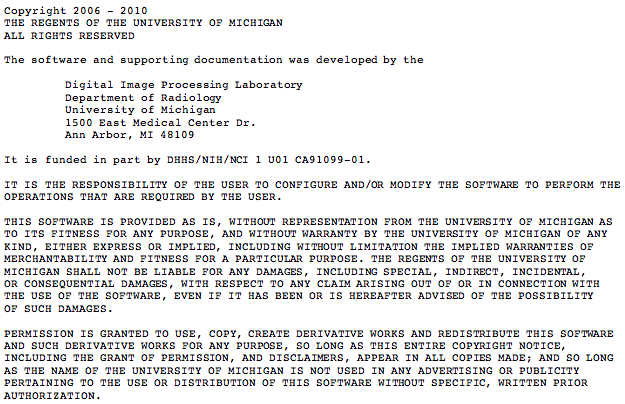
The Lung Image Database Consortium image collection (LIDC-IDRI) consists of diagnostic and lung cancer screening thoracic CT scans with marked-up annotated lesions. It is a web-accessible international resource for development, training, and evaluation of computer-assisted diagnostic (CAD) methods for lung cancer detection and diagnosis. |
More information about the Cancer Imaging Program's Program Announcement for LIDC can be found at: http://imaging.cancer.gov/programsandresources/InformationSystems/LIDC
These links help describe how to use the .XML annotation files which are packaged along with the images in the Cancer Imaging Archive. The option to include annotation files in the download is enabled by default, so the XML described here will be included when downloading the LIDC-IDRI images unless you specifically uncheck this option.
Annotation and Markup Issues/Comments
This link provides a list of available cases and the associated size of each identified nodule.
For a limited set of cases, LIDC sites were able to identify diagnostic data associated with the case. Data was collected for as many cases as possible and is associated at two levels:
At each level, data was provided as to whether the nodule was:
For each lesion, there is also information provided as to how the diagnosis was established including options such as:
Note: This data has not yet been updated to match the new patient ID structure for the LIDC-IDRI data set. We hope to have an updated spreadsheet available soon.
As part of an effort to move towards standard formats for annotation and markup a project was undertaken to convert XML data from the LIDC Pilot project into Annotated Image Markup format (AIM). AIM is a standard which was developed out of the caBIG program. More information about this effort can be found here on the NCI CBIIT wiki: LIDC Conversion to AIM.
We hope to be able to provide the entire LIDC-IDRI set of markup in AIM format at some point in the future, along with a release of the ClearCanvas open source workstation which can view these markups. However at this time the project has been placed on hold. We will update this page if/when the status of this project changes.
MAX ("multi-purpose application for XML") performs nodule matching and pmap generation based on the XML files provided with the LIDC/IDRI Database. It also performs certain QA and QC tasks and other XML-related tasks.
MAX is written in Perl and was developed under RedHat Linux. It has been run under Windows.
Downloading MAX and its associated files implies acceptance of the following notice (also available here\ and in the distro as a text file):

DISCLAIMER: MAX is not guaranteed to process all input correctly. Possible errors include (but are not limited to) the inability to process correctly some types of nodule ambiguity (where nodule ambiguity refers to overlap between nodule markings having complicated shapes or to overlap between a nodule marking and a non-nodule mark).
Download the distro (max-V107.tgz)\; view/download ^ReadMe.txt (a text file that is also included in the distro).